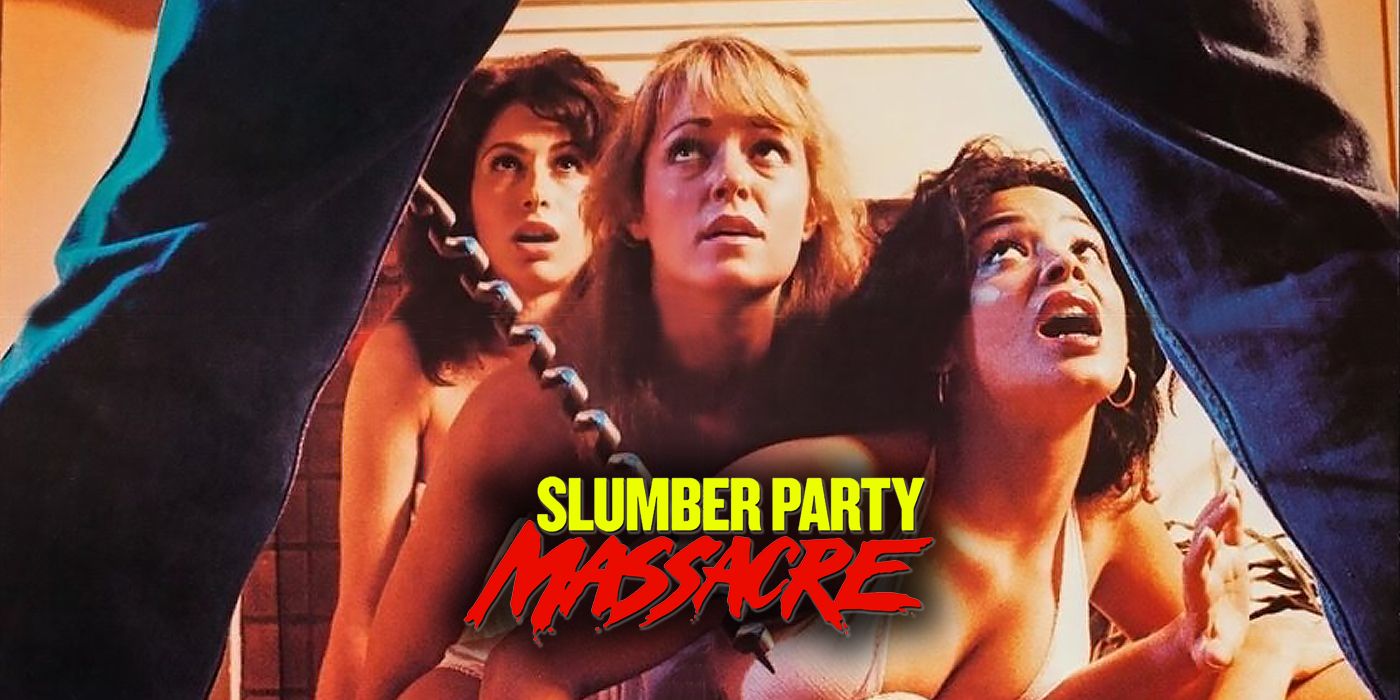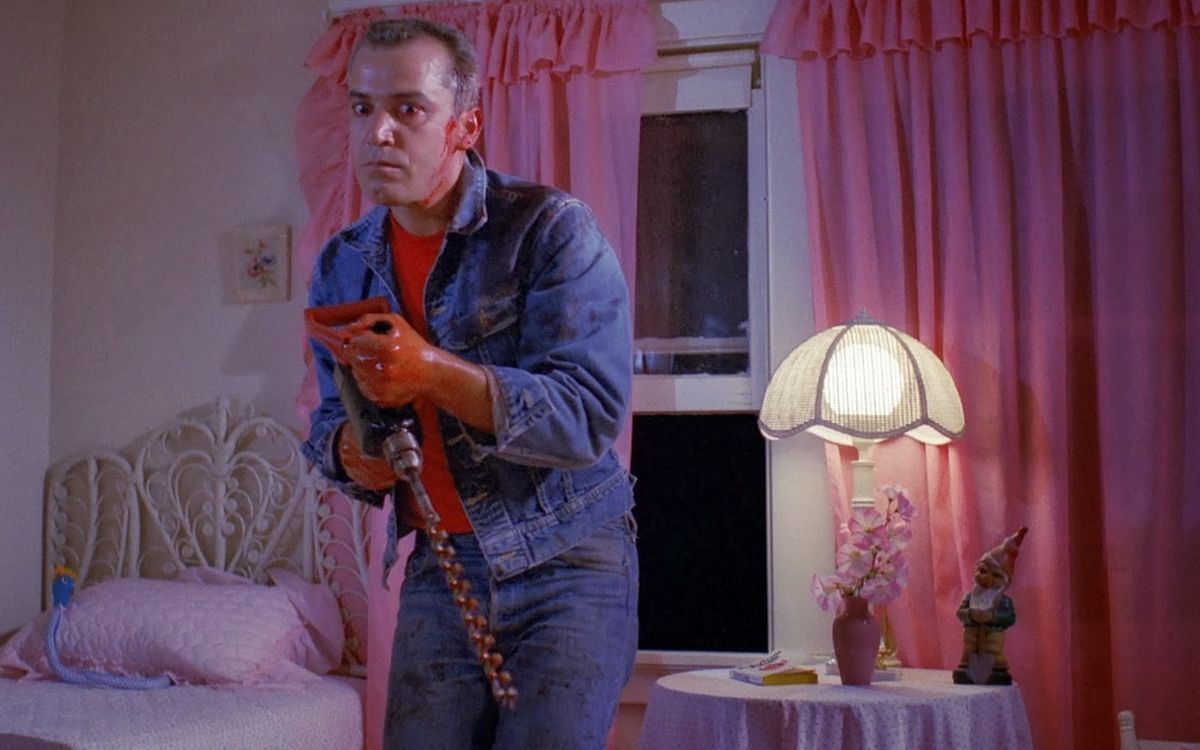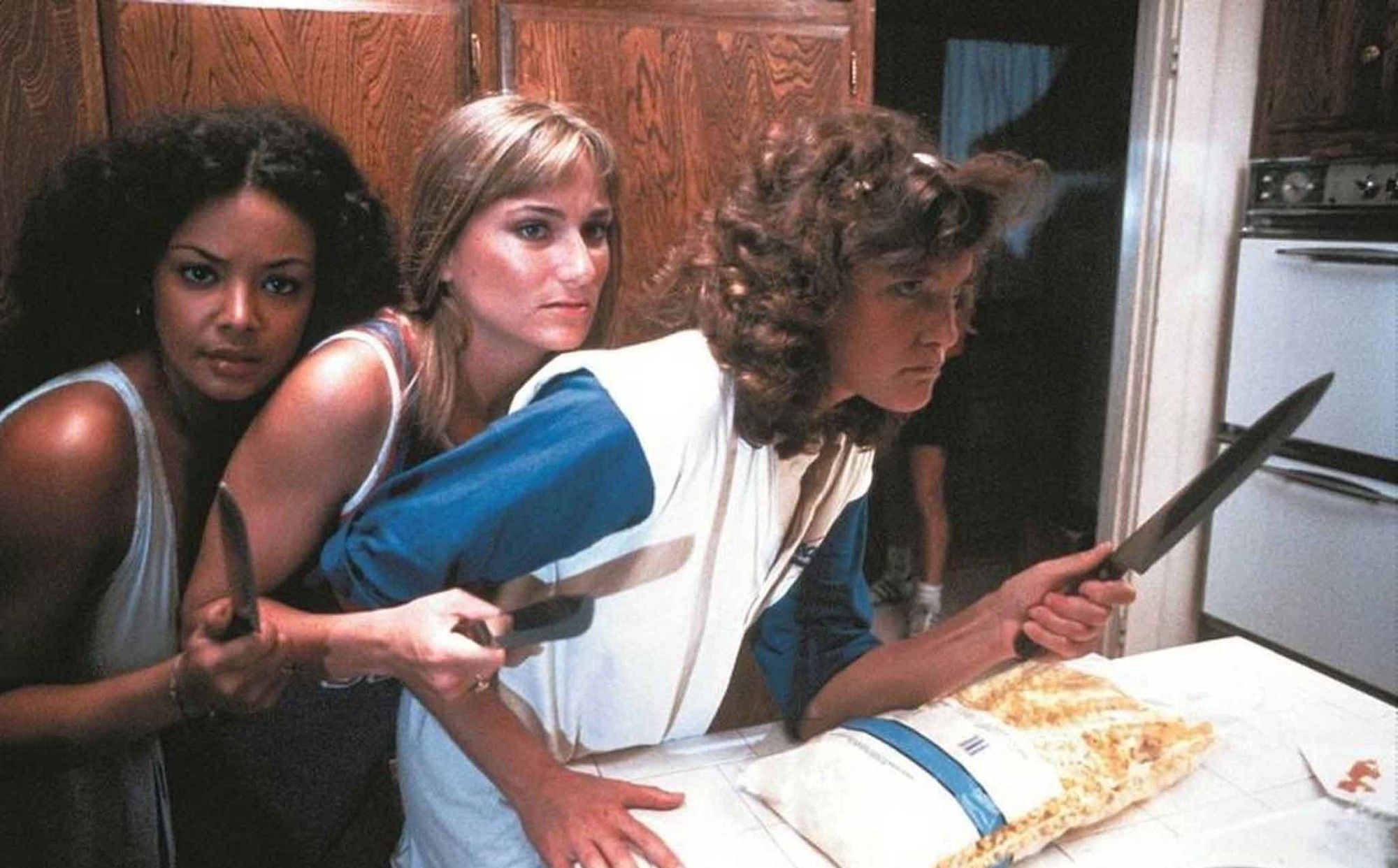The slasher genre, despite all its positive qualities, has always been a genre mired in misogynistic tropes. From sex scenes driven by the male gaze, to the infamous “rule” that losing ones virginity spells death, slasher movies and their killers have pointedly preyed on helpless, topless young women since the start. As Willow Catelyn Maclay describes in her article Lined Lips and Spiked Bats: Amy Holden Jones and the Women of The Slumber Party Massacre: “Slasher films in particular use women for body parts, framing them in the throes of sex and then murdering them, but making sure to emphasize their breasts at all costs.” This propensity of the genre towards functioning at the expense of women is what makes The Slumber Party Massacre’s commentary and simple divergence from the norms all the more compelling.
The Slumber Party Massacre (1982), was written by feminist author Rita Mae Brown and directed by first time director Amy Holden Jones, an editor who had worked with the likes Martin Scorsese and Hal Ashby. The plot is simple and straightforward, offering the standard slasher fare of the time: with her parents out of town, high schooler Trish invites friends for a sleepover, while a killer unfortunately happens to be loose in that very neighborhood. To survive the night, the girls must rely on each other as well as the new girl at school, Valerie, who happens to live next door. Brown penned the screenplay for Slumber Party amid the post-Halloween and Friday the 13th slasher genre boom, in an attempt to parody its tropes. Jones, with backing by famed b-movie producer Roger Corman, left her role as editor on Steven Speilberg’s E.T. to direct Slumber Party. With the combination of a feminst at the typewriter, an enthusiastic, first time director behind the camera, and a filmgoing audience clamouring for more blood, the stage was set for a subversive slasher that could both entertain and commentate.
The Slumber Party Massacre accomplishes a difficult balancing act, giving the viewer all of the sleazy, gory fun that makes slasher movies entertaining, but doing so with thematic intent and clever direction to expound on ideas of the male gaze, sexual violence, and the exploitation of women. Never is the film too preachy, nor too low brow - it’s a clever synthesis of entertainment and social commentary. Predating Alison Bechdel’s 1985 feminst comic which birthed the “Bechdel Test,” in which a movie must have two named woman characters who have a discussion about something other than a man, Slumber Party still passes said test with flying colors. All of the girls have names, personalities, and identities. While, in typical high school fashion, the girls gossip about boys, they also exist and talk as their own entities. This seems intentional by both writer and director to have a movie in which the protagonists are defined outside of male relationships and attachment.
Despite the well defined women characters, Slumber Party is not without vital male characters. The male gaze - the objectifying perspective subjected towards women - is constantly reinforced and shown to be a threat throughout the film. Be it the male classmates of Trish and her friends, who lear and peep in on the slumber party to see the girls undress, or the gaze of the killer as he invades the home and lives of the girls, intent on violence, the movie showcases the different ways in which women face invasive eyes. As Emanuela Betti writes in her article Slumber Party Massacre and the Male Gaze: “The gratuitous nudity was not so much for the gratuity, but to directly point out how this group of girls is the target of a voyeuristic threat, and are purposely being objectified through these male character’s gazes to show that they are in fact the victims of the killer’s drill, but also of the male gaze.”
Perhaps the most obvious symbolic aspect of the film is the overt phallic imagery in the form of the weapons used. After killing a telephone repair woman, herself a subversion of the association of blue collar jobs with men, the film’s slasher, escaped convict Russ Thorn, utilizes a power drill with a long, spiralling masonry bit as his weapon of choice for the rest of the film. With the drill, the sexual imagery of penetration is quite striking. This connection of the killer’s long drill with that of a phallus is further emphasized by the film’s poster, in which the cowering girls are framed by Thron’s legs as he stands over them, drill jutting out from near his crotch. At the movie’s climax, Valerie comes to the aid of her neighbors wielding the equally phallic machete, a slasher weapon mainstay, destroying Thorn’s drill and stopping his rampage. With the destruction of the drill, so too is the male threat’s power taken away, or as Betti put it, the girls are “castrating him metaphorically.” While by today’s standards, immediately equating the phallus with masculinity and violence is understood to be reductive to the conversation of gender, for 1982 this imagery was provocative and spoke to the sexual violence that women experience.
Finally, with Thorn’s vague motives for killing, the film offers the audience a dramatic perspective on the unwanted advances and sexual violence women face in everyday life. As Thorn stands over a terrified, pleading Trish, preparing to strike the final blow, all he offers to her is “I love you. Takes a lot of love for a person to do this. You know you want it. You’ll love it.” A confused and scared Trish simply and profoundly replies, “I don’t even know you.” Through this brief interaction, the fundamental delusion at the heart of sexual violence and violation is explored - men convinced that what they’re doing is a testament of love and a gift, while the woman is left harmed and confused by the reason for these undue actions. Just like Trish and her friends “don’t even know” Thorn and are random victims of circumstance, so too are all women who face sexual assault. They don’t deserve, warrant, or cause the violence they experience.
The Slumber Party Massacre stands among the onslaught of contemporaries of the 80s slasher movie boom as something more than mere sleazy, gory entertainment. From its phallic symbolism, to its commentary on the male gaze, to its rejection of the conservative morality tinged “rules of how to survive the genre,” Brown and Jones, through script and screen, created something that is not only fun, but fundamental to understanding how women are shown in horror, and how women experience the world. So, if you love the subversive horror and feminist tinged films which would follow in the coming decades, consider checking out this simple, yet thoughtful slasher and all the ideas, and horror, it has to offer.



